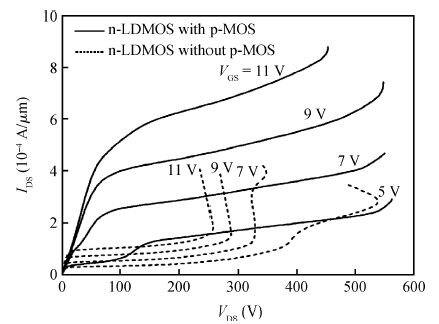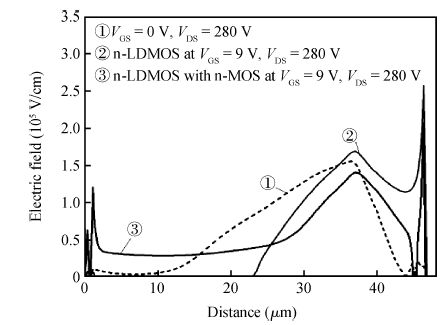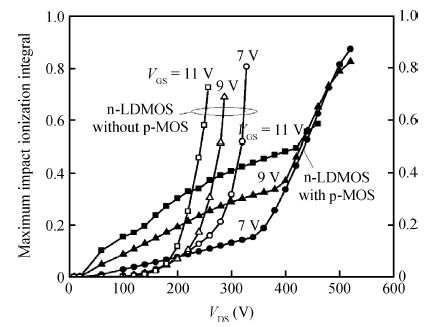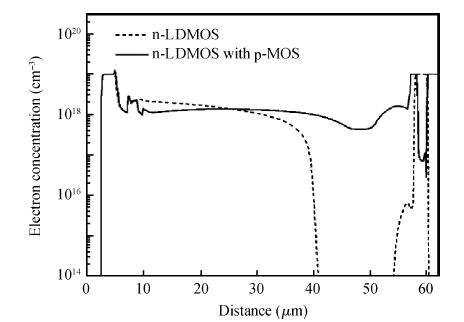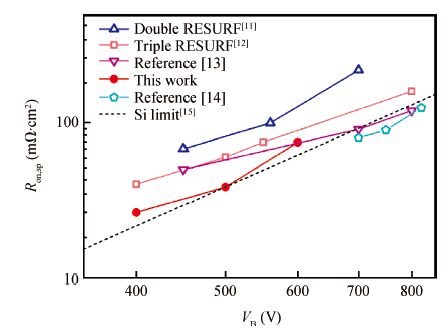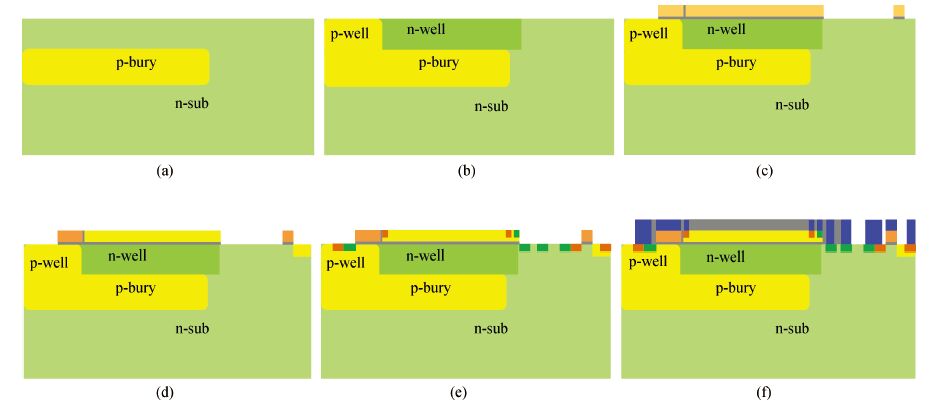| Citation: |
Wenfang Du, Xinjiang Lyu, Xingbi Chen. An LDMOS with large SOA and low specific on-resistance[J]. Journal of Semiconductors, 2016, 37(5): 054006. doi: 10.1088/1674-4926/37/5/054006
****
W F Du, X Lyu, X B Chen. An LDMOS with large SOA and low specific on-resistance[J]. J. Semicond., 2016, 37(5): 054006. doi: 10.1088/1674-4926/37/5/054006.
|
An LDMOS with large SOA and low specific on-resistance
DOI: 10.1088/1674-4926/37/5/054006
More Information
-
Abstract
An LDMOS with nearly rectangular-shape safe operation area (SOA) and low specific on-resistance is proposed. By utilizing a split gate, an electron accumulation layer is formed near the surface of the n-drift region to improve current conduction capability during on-state operation. As a result, the specific on-resistance can be lowered down to 74.7 mΩ·cm2 for a 600 V device from simulation. Furthermore, under high-voltage and high-current conditions, electrons and holes flow as majority carriers in the n-drift region and p-type split gate, respectively. Due to charge compensation occurring between holes and electrons, the local electric field is reduced and impact ionization is weakened in the proposed device. Therefore, a higher on-state breakdown voltage at large VGS is obtained and snap-back is suppressed as well.-
Keywords:
- LDMOS,
- safe operation area (SOA),
- snap-back,
- split gate
-
References
[1] [2] [3] [4] [5] [6] [7] [8] [9] [10] [11] [12] [13] [14] [15] [16] -
Proportional views





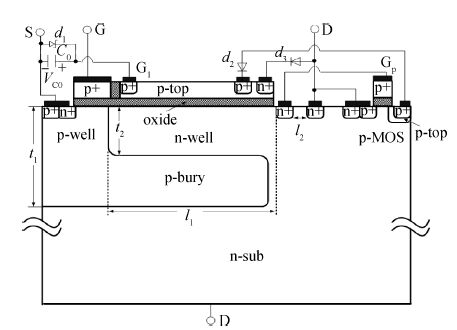
 DownLoad:
DownLoad:
